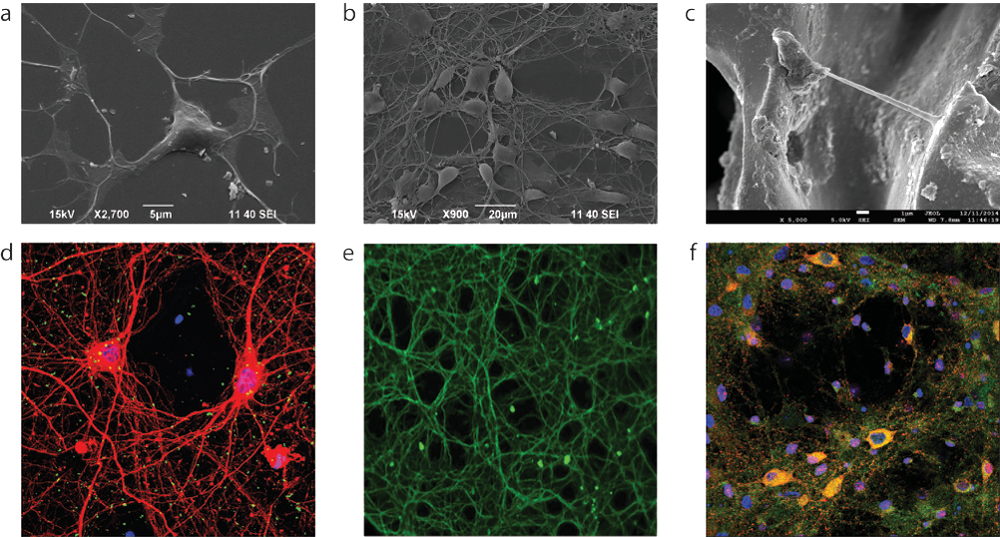Our research activities want to address the following questions:
- Is the use of graphene safe? In particular, what are its effects on the nervous system, blood-brain barrier and renal barrier?
- In case of toxic effects, what are the mechanisms involved?
- Can graphene be used to develop new generation medical implants integrating recording and stimulation functionalities (photo-stimulating devices)?
What we obtained are important results for understanding the behaviour of graphene with biological systems. In particular, we underlined:
- Graphene oxide nanosheets disrupt lipid composition, Ca2+ homeostasis, and synaptic transmission in primary cortical neurons (Bramini et al, 2016).
- Graphene oxide nanosheets alter astrocyte morphology, Ca2+ dynamics and K+ physiology (Chiacchiaretta, Bramini et al, in preparation).
- Graphene flake exposure does not disrupt blood-brain barrier function, with minimal leakage across the endothelium layer.
- Graphene inks and CVD graphene support the growth of healthy neuronal networks, and can be therefore considered biocompatible materials. These devices will be tested for modulating neural activity under light stimulation.
Research activities are conducted in the following research lines:
- Toxicity of graphene nanosheets in vitro in neural cells, and in vivo in rodents (in collaboration with Pharmachemistry group).
- * Conductive graphene-based 2D/3D scaffolds for neuronal cells to drive neuronal regeneration (in collaboration with Materials group).
- Effects of graphene-related materials on the physiology of blood-brain and renal barriers.
- * Graphene-based interfaces for photostimulation of excitable tissues, such as retina (in collaboration with Materials group)
- Metabolomic studies and identification of biomarkers for graphene toxicity (in collaboration with Pharmachemistry group)
* with IIT Graphene Labs
Connection with Graphene Flagship project
WP4 – Health and Environment
- Task 4.3 Impact of GRMs in vitro on lung, skin, gastric and renal barriers (in collaboration with D3-Pharmachemistry and N&N);
- Task 4.5 Impact of graphene and related material on neuronal cells and tissues (in collaboration with Pharmachemistry group);
- Task 4.6 Exploiting the conductive properties of graphene in 2D neuronal interfaces and studying the physiology of neuronal cells and biological barriers challenged with GRMs
WP5 – Biomedical Technologies
- Task 5.5 Technologies for electrical stimulating devices
- Task 5.7 In vitro functional characterization of retinal, cortical, deep-structure CNS, and PNS devices

